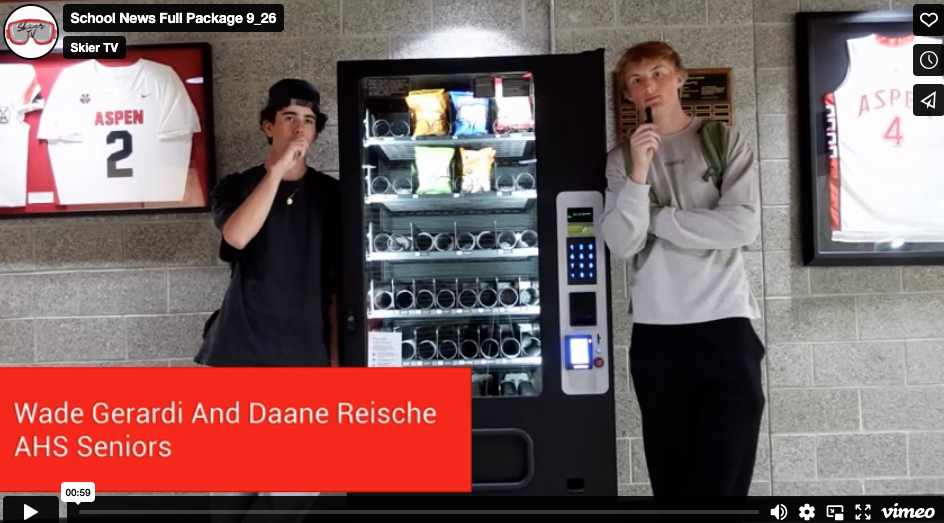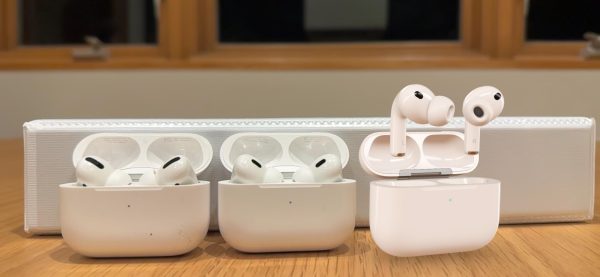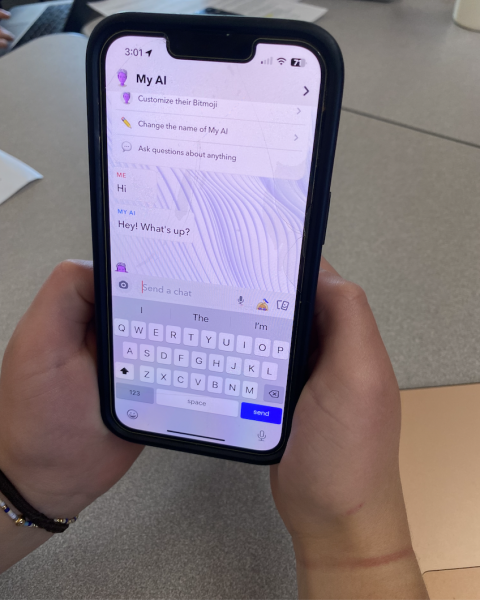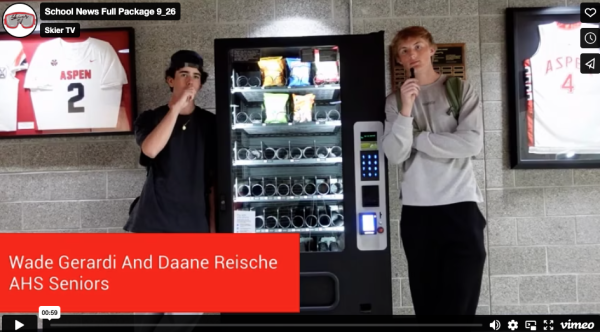Addiction in Moderation: Legal vs. Illegal Addictive Substances
The Skier Cafe, an in-house coffee shop that serves caffeine to teachers and students alike.
Cannabis, caffeine, and sugar are all substances that can create addiction, but how dangerous can they actually be? Why do these legal drugs all affect our brain and how can we work to stop our dependencies? How did they become legal in the first place?
Sugar and caffeine are drugs, albeit less damaging in many cases. They are legal to everyone at any age, but are still addictive. Social media is also a major focal point of the addiction conversation today that is often seen as a preeminent cause of teen depression. Although Cannabis is addictive and inhaling it can deliver some of the chemicals that cigarettes can, it can have health benefits and is even used in cancer treatment. However, it is still illegal federally and in many states, and is also outlawed for anyone under 21 years old.
Cannabis
Often referred to as marujiana or weed, cannabis is often viewed as a gateway drug, or a drug that can often lead to more intense substances like heroin and methamphetamines.
On the other hand, cannabis can be beneficial to some people. Cannabis is still illegal by federal law, but some states have legalized it, many under the pretense of medicinal purposes. According to the American Cancer Society, Two primary chemicals, also known as cannabinoids are found in cannabis. CBD, one of the primary cannabinoids, can be used to help treat seizures and anxiety and can counteract the other primary cannabinoid, THC. THC is the chemical responsible for the high that cannabis provides, which can be counteracted by CBD.THC can be beneficial medically, however, and some studies show it can aleve pain and nausea, and functions as an antioxidant. It is important to keep in mind that these effects are not recognized by the FDA or many other medical institutions.
Two cannabis based drugs are approved by the FDA, both primarily to treat the side effects of cancer and chemotherapy, and a third for a similar purpose is approved in Europe and is under study by the FDA. While Cannabis can be beneficial, that is not always the case. The high that THC brings about limits movement and reaction time and can also cause feelings of anxiety. According to the National Institute on Drug Abuse, a major problem with prescribing cannabis is that instead of having very specific amounts of certain chemicals like you do in pills, doctors can’t prescribe specific amounts of THC as the amounts of different cannabinoids varies from plant to plant.
Caffeine
Caffeine has always been legalized for everyone in the USA, besides some athletes before a competition. Caffeine can be found in all kinds of food, from energy drinks to chocolate. Coffee plays a massive role in many people’s lives, and the energy perk that it can provide can become a requirement for people to get through their day. However, according to the National Institute on Drug Abuse, caffeine is not actually addictive. For a drug to become addictive, it has to release a large amount of dopamine to create an addiction to the feeling it produces. Dopamine is a chemical released by the brain that creates a happy feeling. Exercise can release dopamine naturally. Compared to other drugs like opiates and alcohol, caffeine releases a very small amount of dopamine.
However, because it creates that boost in energy, it can create a dependency, and the withdrawal of caffeine and caffeine abuse are both recognized as conditions. Another big difference between addictions to more severe drugs and caffeine is that people can function without caffeine, except for the mild withdrawal symptoms, but they can’t function without drugs like methamphetamines.
Sugar
What about sugar? Sugar is a nutrient that can boost energy and mood and is used in many foods as a sweetener. According to the Addiction Center, sugar could even be as addictive as cocaine. When people start eating sugar to deal with negative emotions like depression, it creates a vicious cycle. They may start to gain weight, which can lead to more self-deprivation, and therefore more consumption.
Alongside the taste, it does produce larger amounts of dopamine and the energy boost can create a dependency, basically a more addictive version of caffeine. A major problem with sugar is the marketing campaigns that the big sugar industry put out in the 1970s and 80s. The massive companies like Nestle or Mars Wrigely Confectionary are so powerful that they can control what people know about sugar related illnesses.
So what’s the deal?
Why is it that sugar and caffeine are legal, but cannabis is not? The short answer is racism, on two charges. According to Britannica, there are two main reasons why cannabis was banned. Cannabis was rarely smoked in the US before the Mexican revolution in 1910, but at that point, many Mexicans began immigrating to the US, bringing with them marijuana. Federal Bureau of Narcotics (FBN) claimed that it caused a “lust for blood,” and tried to incite xenophobia based on the substance. In 1930, the FBN was established, and with it, pressure for the bureau to act. Harry Anslinger, the head of the FBN, decided to attack cannabis. Although scientists of the time had come to a consensus that cannabis is not actually that dangerous, Anslinger aimed for a victory for the new Bureau.
Britannica continues that Anslinger went after African Americans. He claimed that white women who used cannabis would be more likely to have sex with Black men because cannabis was “a threat to white women’s virtue.” He cited that it incited more violence and insanity, and used racist speech to create fear, going as far as to say, “Reefer [cannabis] makes darkies think they’re as good as white men.” Ansligner was not questioning the actual medical dangers of cannabis, but instead attacked minorities to ignite deep-rooted fears in Americans of the time.
The Results
What if instead of cannabis coming into the spotlight of the FBN or public eye, it had been caffeine or sugar? Would we associate the same dangers that smoking cannabis has with drinking coffee?
Not necessarily, as caffeine is a substance that isn’t particularly dangerous or addictive. On the other hand, sugar can be harmful and addictive, and in many cases lead to problems with diet just like cannabis can with anxiety. But while sugar is not very beneficial medically, cannabis can be.
The main thing to keep in mind is that cannabis is unhealthy for developing brains, and human brains don’t fully develop until 25 years of age. After that, if used in a way that if you don’t create an addiction or dependency and continue to stay away from harder drugs, it can actually help and be used to treat medical ailments. As for caffeine, it isn’t necessarily bad as long as you don’t create a dependency. Sugar is ok in moderation, and is required in small amounts for survival, but eating too much or eating to suppress emotion can be very damaging to your mental and physical health.

This is Beau's second year with The Skier Scribbler. He is a junior and is passionate about the environment. He likes to rock climb, ski, and be outside. ...































scott T ~ Oct 24, 2022 at 11:59 am
well written and researched. I learned a lot, thanx